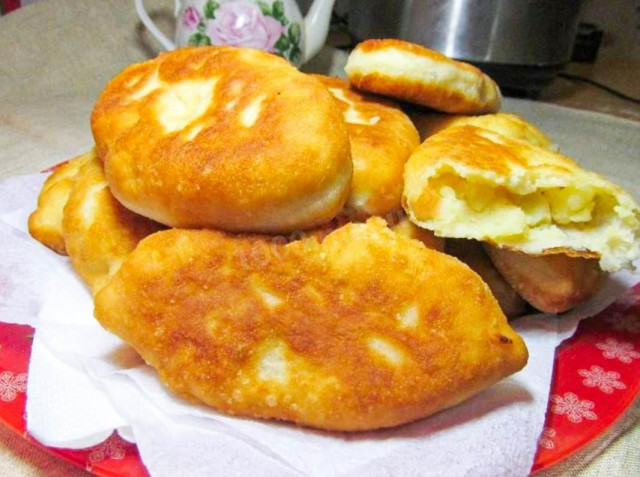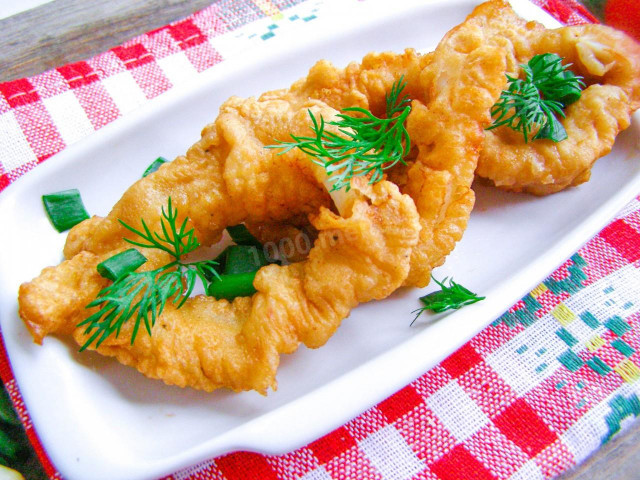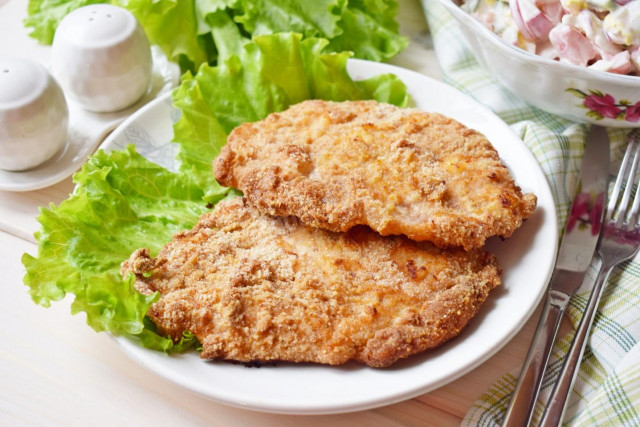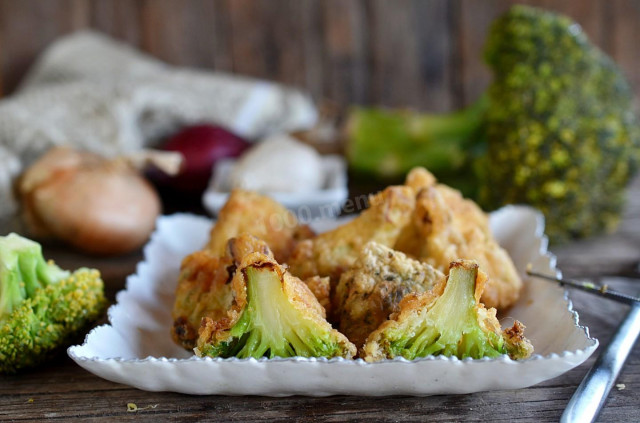Composition / ingredients
Step-by-step cooking
Step 1:

How to make yeast pies with potatoes in a bread maker? Prepare the necessary products.
Step 2:
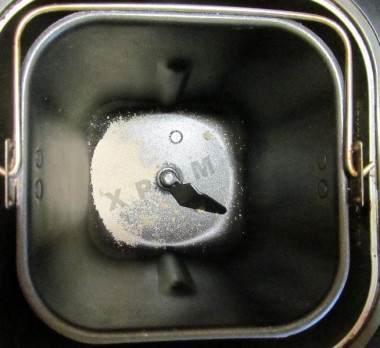
First prepare the dough in a bread maker. How to make dough? In my model, the products for the dough are laid out in the following way — first dry ingredients are poured, then liquid is poured. In other models, the order of bookmarks may differ, see the instructions for your bread maker. Pour in the yeast. I advise you to take fast-acting ones that are immediately mixed with flour and do not require pre-activation.
Step 3:
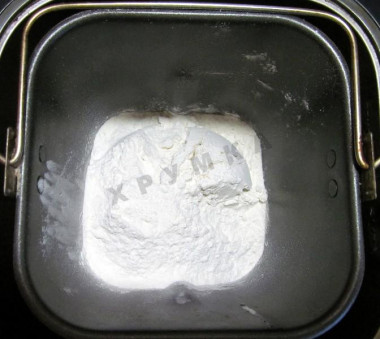
Pour in the sifted flour. It is important to sift the flour to saturate it with oxygen. Then the baking will turn out to be airy and will rise well when baking.
Step 4:
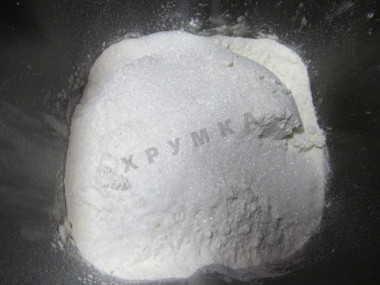
Next, add sugar and salt.
Step 5:
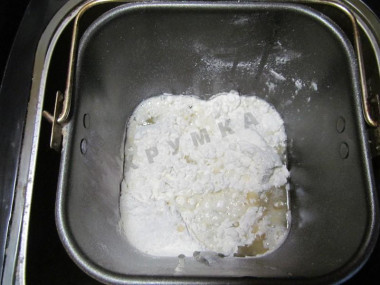
Pour in the liquid ingredients — butter, milk and 50 ml of water at room temperature. Please note that the water is not added all at once, but only 50 ml.
Step 6:
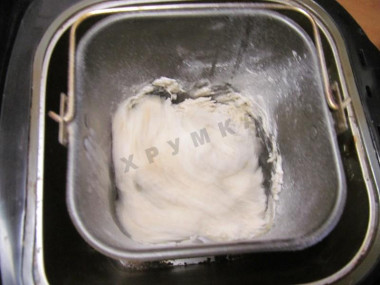
Turn on the program "Dough kneading", it takes me 1 hour 30 min.
Step 7:
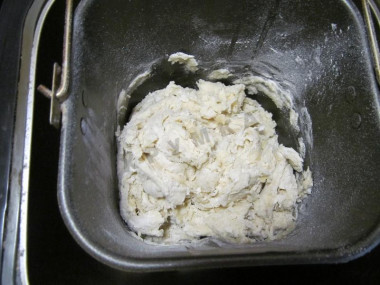
After 3 minutes, open the lid and add boiling water — the remaining 150 ml of water. This way we will get a custard dough.
Step 8:

While the program is running, prepare the filling. How to make a potato filling? Prepare the products. Wash the potatoes, peel, cut into pieces and fill with clean water. Put it to cook on a small fire. Cook the potatoes for about 20 minutes after boiling. At the very end, add salt. Determine readiness with a knife — it should easily pierce the potatoes.
Step 9:
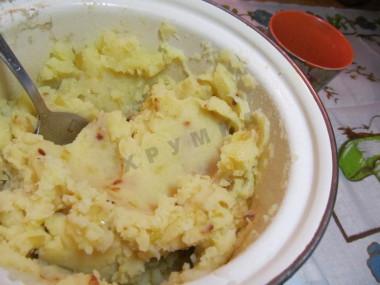
Drain the water, leaving half a cup. Mash the potatoes in mashed potatoes, adding broth. Don't pour a lot of it — the puree for the filling should be thick. Peel the onion and cut into small cubes. Fry it in a frying pan in vegetable oil until golden. Fry the onion over low heat, stirring constantly, for about 5 minutes. Add the fried onion to the puree. Mix it up. The filling is ready!
Step 10:

Meanwhile, the dough is already ready — it is perfectly kneaded and doubled in size.
Step 11:
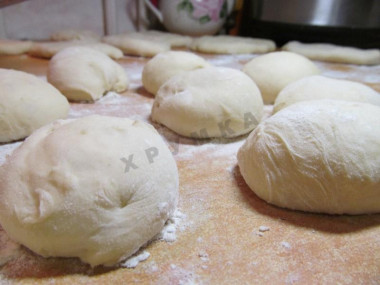
Remove the dough from the bowl onto a work surface sprinkled with flour. Divide it into small pieces, then roll each into a bun.
Step 12:
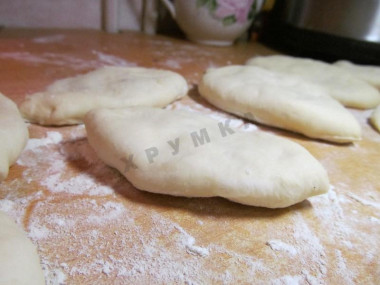
Roll out the bun into a circle about a centimeter thick. Put the filling on it with a spoon, seal it well, forming an oblong pie. Thus, make pies from all the blanks.
Step 13:
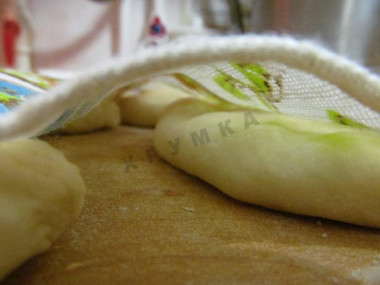
Leave the pies to rise for 15-20 minutes. Cover them with a towel.
Step 14:

Pour vegetable oil into a deep frying pan and heat it well. To check whether the oil has warmed up well enough in a frying pan, you can do it in a simple way. Lower a wooden spatula into it. If bubbles have gathered around it, then you can start the frying process. Reduce the heat to medium. Dip the pies in butter in batches so that they do not interfere with each other to fry.
Step 15:
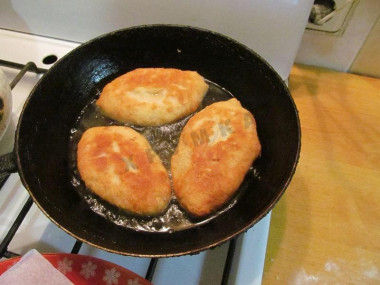
Fry the pies on both sides, 2-3 minutes each, until golden brown.
Step 16:

Put the finished pies on paper napkins so that excess fat is absorbed.
Step 17:
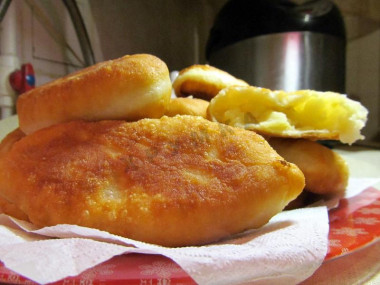
Serve them immediately after cooking, after cooling down a little — fried pies taste better with the heat from the heat. Bon appetit!
Use oil with a high smoking temperature for frying! Any oils are useful only until a certain temperature is reached - the point of smoking, at which the oil begins to burn and toxic substances, including carcinogens, are formed in it.
Unrefined oils, with rare exceptions, have a low smoking point. There are a lot of unfiltered organic particles in them, which quickly begin to burn.
Refined oils are more resistant to heating, and their smoking point is higher. If you are going to cook food in the oven, on a frying pan or grill, make sure that you use oil with a high smoking point. The most common of the oils with a high smoking point: refined varieties of sunflower, olive and grape.
For cooking, it is better to use filtered or bottled water that is neutral to taste. If you use tap water, keep in mind that it can give the dish an unpleasant characteristic taste.
Important! Using dry yeast, it should be borne in mind that they occur in two forms: active and instant (read the instructions carefully before use!).
Active dry yeast looks like beads or small balls. Before applying them, they must be brought out of "sleep mode". To do this, the active yeast is diluted in warm sweet water, milk or whey. The formed bubbles, foam or "cap" indicate that the yeast is ready for further use. Active dry yeast must be brought to complete dissolution in the liquid, otherwise, due to the remaining grains, the dough may not rise and the baking will be spoiled (yeast grains that have not dissolved in the liquid and got into the dough will not disperse on their own, which means they will not work).
Instant dry yeast is easier to use. They do not need to be activated before use. Such yeast, along with other ingredients, is simply added to the dough. As a result, the baking time is reduced.
It should also be remembered that both types of dry yeast may differ in their activity from different manufacturers.
Caloric content of the products possible in the composition of the dish
- Ripe potatoes - 80 kcal/100g
- Baked potatoes - 70 kcal/100g
- Mashed potatoes - 380 kcal/100g
- Boiled potatoes - 82 kcal/100g
- Potatoes in uniform - 74 kcal/100g
- Fried potatoes - 192 kcal/100g
- Whole cow's milk - 68 kcal/100g
- Milk 3.5% fat content - 64 kcal/100g
- Milk 3.2% fat content - 60 kcal/100g
- Milk 1.5% fat content - 47 kcal/100g
- Concentrated milk 7.5% fat content - 140 kcal/100g
- Milk 2.5% fat content - 54 kcal/100g
- Whole durum wheat flour fortified - 333 kcal/100g
- Whole durum wheat flour universal - 364 kcal/100g
- Flour krupchatka - 348 kcal/100g
- Flour - 325 kcal/100g
- Granulated sugar - 398 kcal/100g
- Sugar - 398 kcal/100g
- Vegetable oil - 873 kcal/100g
- Salt - 0 kcal/100g
- Water - 0 kcal/100g
- Onion - 41 kcal/100g
- Dry yeast - 410 kcal/100g

